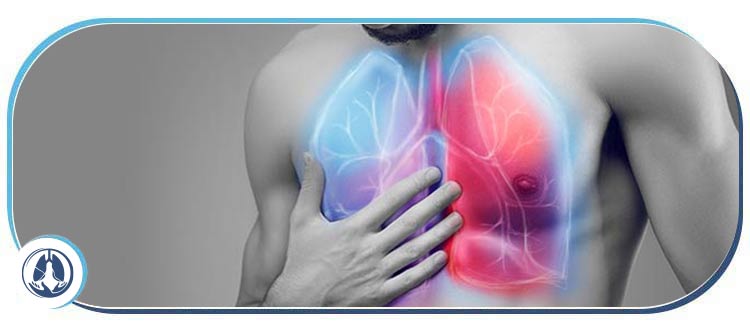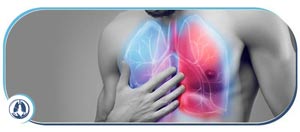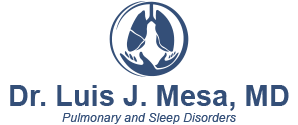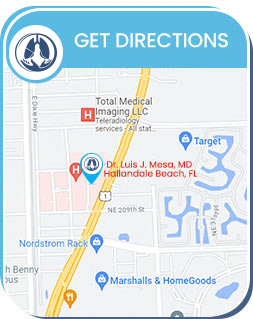Acute Respiratory Distress Syndrome (ARDS) Treatment Specialist in Hallandale Beach, FL
Acute respiratory distress syndrome, known as ARDS, is a lung condition which is severe and potentially life-threatening. ARDS can be caused by a variety of underlying conditions, so the symptoms may vary depending on the cause of the condition. Get effective and comprehensive care from board-certified Dr. Luis J. Mesa MD. Contact us today or book an appointment online to see what our team of specialists can do for you. We are conveniently located at 1250 E Hallandale Beach Blvd Suite 205 A, Hallandale Beach, FL 33009.


Table of Contents:
What is acute respiratory distress syndrome?
What are the symptoms of ARDS?
What are the causes of ARDS?
Is acute respiratory distress syndrome life-threatening?
Acute respiratory distress syndrome, known as ARDS, is a lung condition which is severe and potentially life-threatening. ARDS occurs when fluid builds up in the tiny air sacs, known as alveoli, in the lungs. Fluid buildup makes it difficult for oxygen to pass into the bloodstream, leading to low oxygen levels in the body. ARDS can be caused by a variety of factors, including sepsis, pneumonia, trauma, and lung injury from inhaling harmful substances.
The symptoms of ARDS include difficulty breathing, rapid breathing, low oxygen levels, and a bluish tint to the skin, lips, and nails. Treatment for ARDS typically involves providing oxygen to the patient and using mechanical ventilation to help them breathe. Medication is often combined with treatment to reduce inflammation in the lungs and remove excess fluid buildup.
Overall, ARDS is a serious condition that requires prompt medical attention to ensure a full recovery. By seeking treatment at an appropriate time, you can gain a higher chance of recovery and limit risk of complications.
Common symptoms of acute respiratory distress syndrome (ARDS) include:
• Rapid and shallow breathing
• Shortness of breath, even when resting
• Fatigue and weakness
• Coughing and difficulty breathing
• Chest pain or discomfort
• Cyanosis, a blue tint to the lips, nails or skin
• Rapid heartbeat and low blood pressure
• Confusion, anxiety, and restlessness
• Lightheadedness
• In severe cases, loss of consciousness
ARDS can be caused by a variety of underlying conditions, so the symptoms may vary depending on the cause of the condition. In some cases, the symptoms may be gradual, while in other cases they can come on suddenly. If you suspect that you or someone you know has ARDS, it’s important to seek medical attention right away. ARDS is a serious condition that can be life-threatening if not treated promptly.
Acute respiratory distress syndrome (ARDS) can be caused by a variety of factors, including:
• Sepsis – Sepsis causes inflammation throughout the body, leading to fluid buildup in the lungs.
• Pneumonia – An infection of the lungs can cause inflammation and fluid buildup in the lungs.
• Trauma – Serious injury, such as from a car accident or fall, can cause lung injury and fluid buildup in the lungs.
• Lung injury from inhaling harmful substances – Breathing in smoke, chemicals, or other toxic substances can cause damage to the lungs and lead to ARDS.
• Near-drowning – Immersion in water can cause fluid to enter the lungs, leading to ARDS.
• Transfusion-related acute lung injury – A rare complication after blood transfusion can occur within 6 hours of the transfusion.
• Pulmonary embolism – A blocked artery in the lung can cause ARDS.
• Complications – Complications following certain medical procedures and treatments, such as prolonged mechanical ventilation, high-pressure mechanical ventilation, and prolonged use of extracorporeal membrane oxygenation, can lead to ARDS.
ARDS can be caused by multiple factors at the same time, and in some cases the underlying cause may not be identifiable. In any case, if you suspect that you or someone you know has ARDS, it’s important to seek medical attention promptly.
Acute respiratory distress syndrome (ARDS) is a serious condition that can become life-threatening if untreated. The fluid buildup in the lungs that occurs with ARDS makes it difficult for oxygen to pass into the bloodstream, leading to low oxygen levels in the body. This can cause damage to the organs and other systems of the body, which can be fatal.
The mortality rate of ARDS varies depending on the underlying cause, the severity of the illness, and the patient’s age and overall health. In general, the mortality rate ranges between 20 to 40%. However, some studies have reported higher mortality rates, especially in patients with severe ARDS.
Treatment for ARDS includes providing oxygen to the patient and utilizing mechanical ventilation to assist breathing. Medications are used to reduce inflammation or remove fluid from the lungs. With prompt and appropriate treatment, many people with ARDS can recover fully.
At Dr. Luis J. Mesa, MD and experienced team will help provide quality treatment for various pulmonary conditions. Contact us today or book in online to get started down the road to better sleeping! We serve patients from Hallandale Beach FL, Aventura FL, Hollywood FL, Golden Glades FL, Miramar FL, Hialeah FL, Fort Lauderdale FL, and BEYOND.







